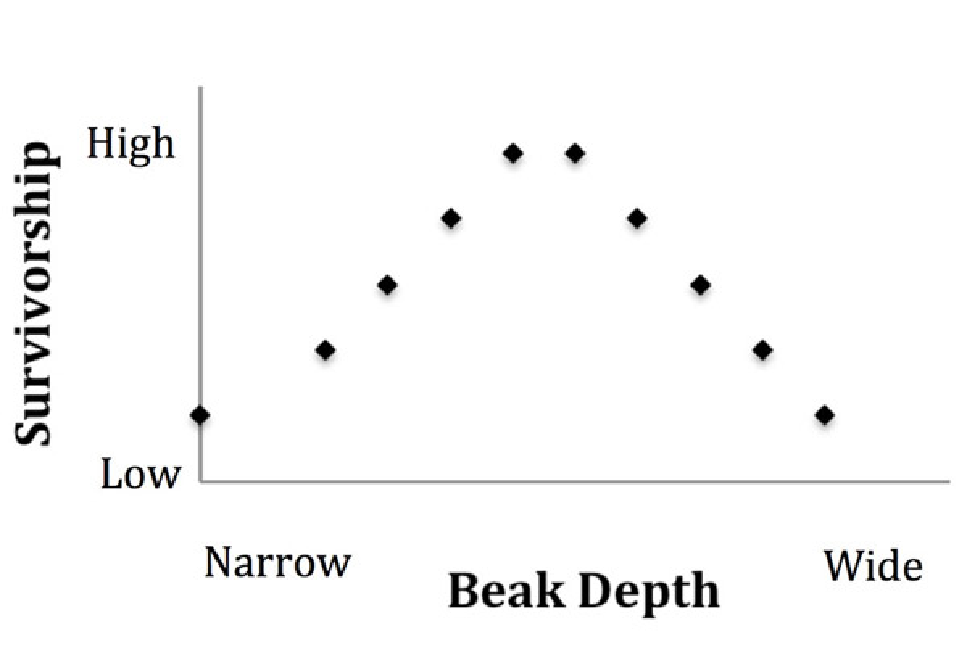The figure below shows the relationship between beak depth in the medium ground finch on Daphne Major and relative fitness. Assuming that beak depth is heritable, what do you predict about beak depth in the next generation?

A. Mean beak depth will decrease.
B. Mean beak depth will increase.
C. Mean beak depth will stay about the same.
D. Mean beak depth in the next generation cannot be predicted using this data.
Clarify Question
What is the key concept addressed by the question?
What type of thinking is required?
Gather Content
What do you already know about relative fitness? What other information is related to the question?
Choose Answer
Given what you now know, what information is most likely to produce the correct answer?
Reflect on Process
Did your problem-solving process lead you to the correct answer? If not, where did the process break down or lead you astray? How can you revise your approach to produce a more desirable result?
C. Mean beak depth will stay about the same.
Clarify Question
What is the key concept addressed by the question?
· The question stem is asking you to determine how the relationship between beak depth and relative fitness will influence future beak depth.
What type of thinking is required?
· This is an analyze question because you have to break beak depth and relative fitness, or survivorship, into their component pieces to understand how they function in relation to one another.
Gather Content
What do you already know about relative fitness? What other information is related to the question?
· Fitness is a relative concept; the most fit phenotype is simply the one that produces, on average, the greatest number of offspring.
Choose Answer
Given what you now know, what information is most likely to produce the correct answer?
· Based on the graph, which phenotype presents the highest survivorship? How does survivorship influence an organism’s fitness relative to other organisms of different survivorship? If the survivorship for one phenotype is low, then how would the phenotypic variation be influenced? The mean beak size has the highest survivorship so it will be maintained.
Reflect on Process
Did your problem-solving process lead you to the correct answer? If not, where did the process break down or lead you astray? How can you revise your approach to produce a more desirable result?
· Answering this question correctly depended not only on distinguishing between beak depth and survivorship, but on your ability to break down, or analyze, how variation is influenced by beak depth and survivorship. If you got an incorrect answer, did you remember that relative fitness would likely affect variation by selecting for the phenotype best adapted to the environment? Did you have trouble breaking down how relative fitness influences variation levels to determine the correct answer?
You might also like to view...
Compared with sponges, cnidarians have a wider array of cell types permitting more sophisticated tissue functions. These functions include (select all that apply):
A. secretion of digestive enzymes. B. muscle contraction/movement. C. the ability to sense the environment via a network of nerve cells. D. the ability to communicate within the organism using hormones. E. none of these
How does mineral mobility affect the symptoms of deficiency in plants?
a. Deficiency of a mobile nutrient usually affects older organs more than young ones b. Deficiency of a mobile nutrient usually affects younger organs more than older ones
Diatoms are used for four of the following. Which one is the exception?
a. biofuels
b. ink
c. filters
d. cleaners
e. insecticides
Which of the following is a phenotype?
a. Tt b. T c. Heterozygous d. Short